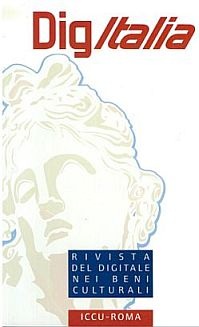Le opere orfane
Keywords:
orphan works, copyrightAbstract
The orphan works, according to the law, are those works or phonograms protected under copyright, but for which, at the end of a diligent search, he/she was not identified or, even if identified, no owner of the rights was found. The impossibility of using orphan works - if not for conservation purposes - by the cultural institutions that hold them (to which the provisions of Legislative Decree 163/2014 could instead allow commercial exploitation) could be partly solved with an even more punctual regulatory intervention that establishes the codification of the methods of calculation of fair compensation, encourages the development without limitation of "digital libraries" and limits the financial consequences for cultural institutions that decide, after having invested considerable resources in the diligent search for the right holder, to use the Orphan Works. The introduction, in fact, of the concept of fair compensation to be paid to the holder of the rights when he/she is identified, without the rules for the relative calculation being codified and without a prescriptive time limit having been introduced to the possibility of requesting such a relief financial, constitute an unacceptable risk for cultural institutes notoriously not endowed with great financial resources. As a consequence of this normative vulnus, a very large quantity of material remains therefore in the condition of orphanhood, despite the fact that our system has finally implemented the directive 2012/28 / UE with the legislative decree 163/2014, which modified the law 633 / 1941 establishing a copyright. The phenomenon of orphan works affects all countries in which copyright is protected and in recent years the impulse given by regulations and policy guidelines to digitalization and to the consequent dissemination of cultural information through processes of mass digitization has been strengthened. It therefore becomes necessary to assess whether it is possible, after the transposition of the EU directive, to begin to hypothesize investment programs in partnership with private individuals for the exploitation of orphan works, understood not as a mere financial result but as a progressive surfacing of the hidden knowledge to be rediscovered and duly used. Although reliable data on the number of orphan works present in the different collections are not yet available, it becomes imperative to be able to estimate the size of the phenomenon to face a possible financial investment program. The purpose of this study was therefore to provide policy makers, publishers and librarians and all potentially interested parties with a proposal for an organizational approach to favor the massive sharing of digital/digitized book assets, at least those already available, in agreement with national and international laws on copyright.Downloads
Download data is not yet available.
Downloads
Published
2020-01-27
How to Cite
Berioli, F. (2020). Le opere orfane. DigItalia, 14(2), 9–32. Retrieved from https://digitalia.cultura.gov.it/article/view/2315
Issue
Section
Essays
License
Copyright (c) 2020 DigItalia

This work is licensed under a Creative Commons Attribution-ShareAlike 3.0 Unported License.
The Authors publishing their contributions on this journal agree to the following conditions:
- The Authors detain intellectual property rights of their work and transfer the right of first publication of the work to the journal, under the following Licence: Attribution-ShareAlike 3.0 Italy (CC BY-SA 3.0 IT). This Licence allows third parties to share the work by attributing it to the Authors and clarifying that the work has been first published on this journal.
- Authors can sign other, non-exclusive licence agreements for the dissemination of the published word (e.g. to deposit it in an institutional archive or publish it in a monography), provided that they state that the work has been first published on this journal.
- Authors can disseminate their work online (e.g. in institutional repositories or on their personal websites) after its publication, to potentially enhance knowledge sharing, foster productive intellectual exchange and increase citations (see The Effect of Open Access).






